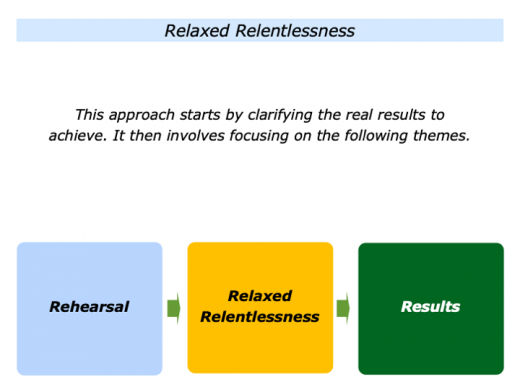
Great athletes sometimes follow these steps when performing at their best. The approach can also be adapted by other people who want to deliver peak performances.
Bearing in mind what they can control, a person starts by clarifying the results they want to achieve. They then go through the following steps.
Rehearsal
They rehearse how they can follow their chosen strategies. This includes how they will manage both successes and setbacks on the road to delivering the desired results.
Relaxed Relentlessness
They move into action and follow their chosen rhythm. This sometimes involves being both relaxed and relentless when translating their strategies into action.
Results
They perform superb work and aim to deliver the desired results. They also rise to the occasion when it matters. This sometimes includes delivering peak performances.
Looking back, can you think of a situation when you demonstrated relaxed relentlessness? One writer described how they took this approach when doing a long project.
“I began by sketching the schedule I wanted to follow on the way towards reaching the goal. It was important to pace myself properly.
“Bearing this in mind, I scheduled three kinds of time: a) preparation time; b) performing time; c) pottering around time.
“The preparation part involved going through certain rituals and planning what I wanted to accomplish in the next block of time.
“The performing time involved making the best use of my prime times – the times of the day when I had most energy. During this time I was able to relax and follow a certain rhythm. This enabled me to do my best work.
“The pottering around times were also useful. I just let my mind wander. Sometimes these times resulted in making creative breakthroughs.”
You will have your own approach to following relaxed relentlessness approach. If you wish, try tackling the exercise on this theme. This invites you to complete the following sentences.
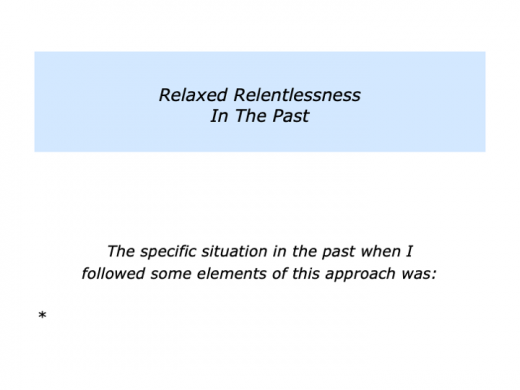
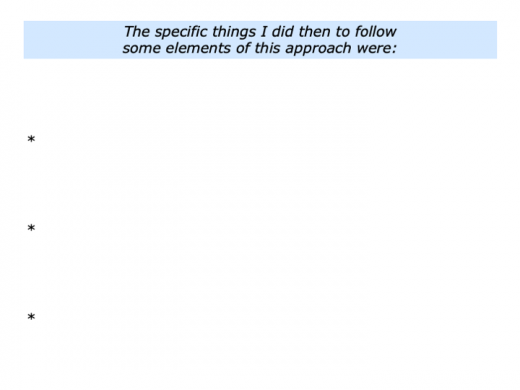
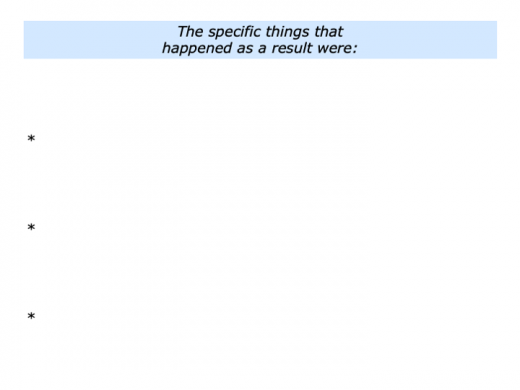
How can you follow some of these principles in the future? You may want to do this when pursuing a specific project, leading a team or doing another activity. Let’s consider how you can take these steps, starting with what you want to achieve.
Results
Imagine that you lost your job during Covid. Applying for various full-time roles proved unsuccessful and sapped your confidence.
After several months, however, one of your old managers offered you the opportunity to do a project in their organisation. This would initially be for three months but it could lead to further work in the future.
Talking with your partner, you decided to take the role. It meant working from home and managing some aspects of home schooling, but the pluses of taking this route far outweighed the minuses.
Looking ahead at the project, you begin to define the results you want to deliver for the organisation. Bearing in mind the research you have done already, you aim:
To clarify your key stakeholders – such as both your internal and external customers – and the results they want delivered;
To clarify the specific strategies you can follow to deliver these results;
To clarify the specific things that will be happening that will show you have delivered the desired results.
There are many models for clarifying the desired results. Some focus on the three Ps – profits, product quality and people.
Imagine that you have clarified the targets to be achieved under the relevant headings. You may then want to add another dimension to the goal setting.
Clarifying the actual words you would
like to hear the stakeholders saying
This an old but useful exercise. Start by brainstorming all the key stakeholders that it will be important to satisfy. Looking at each of these people in turn, clarify the results they would like delivered.
Describe the actual words you would like them to be saying about the work you do and deliver. For example, you may want one of your external customers to say the following things.
“They deliver great service … They proactively keep us informed about the progress being made … They act as real partners and trusted advisors … They help us to achieve success.”
When doing this exercise, it is important to focus on certain themes. These are:
To see the world from the stakeholder’s point of view … To clarify the real results they want delivered … To clarify how they want to feel about the way you relate to them and how you help them to achieve success.
Imagine that you have described the actual words you want the stakeholders to be saying. You can then ask yourself:
“How can I do my best to ensure they are saying these things?”
Focus on what you can control. You are not in control of the stakeholder’s personality, changing priorities or the words they use. But you can do your best and hope this leads to them saying some of these things.
Here is the exercise on this theme. This invites a person to focus on each of their stakeholders. Sometimes this can involve describing many different stakeholders and the words they want to hear each of them saying.
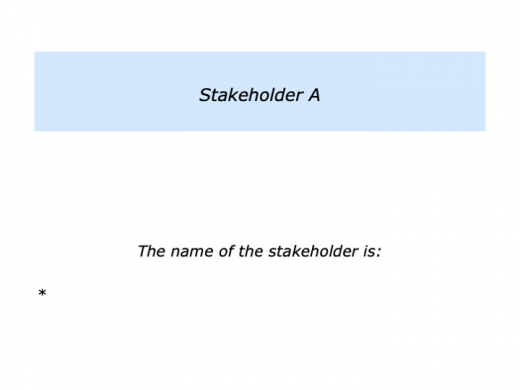
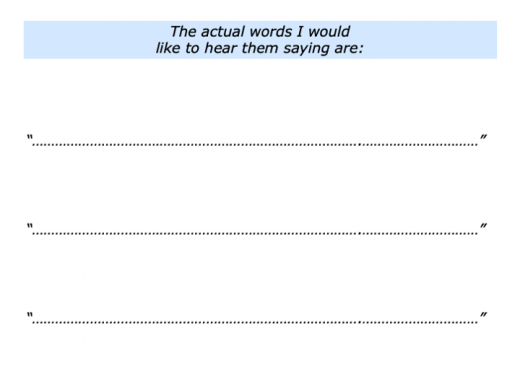
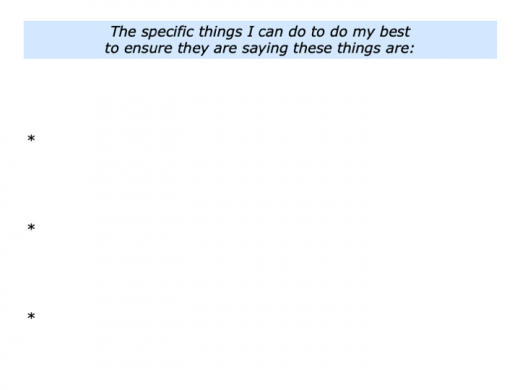
Rehearsal
Imagine that you are clear on the results to achieve. Before moving into action, however, it can be useful to prepare properly.
Charles Garfield, the author of Peak Performers, described how many great workers rehearse before going into their version of the arena. The National Business Association produced a summary of his views on mental rehearsal in one of their newsletters. Here is an excerpt from that piece.
Peak performers practice mental rehearsal. They rehearse, in their mind’s eye, any incident or event that is important to them.
Business executives can benefit by rehearsing specific events in the mind’s eye, including all those possible outcomes and possible surprises that can materialise. This mental practice can build familiarity and boost confidence and self-esteem.
Great workers in many fields take this approach. Wayne Rooney, the footballer, explained what he did before his team had an away fixture and needed to change the colours of their kit. Speaking in an interview with ESPN, he said:
“Part of my preparation is I go and ask the kit man what colour we’re wearing – if it’s red top, white shorts, white socks or black socks.
“Then I lie in bed the night before the game and visualise myself scoring goals or doing well. You’re trying to put yourself in that moment and trying to prepare yourself, to have a ‘memory’ before the game.
“I don’t know if you’d call it visualising or dreaming, but I’ve always done it, my whole life.”
There are many approaches to mental rehearsal. One approach is to relax and work through the following steps.
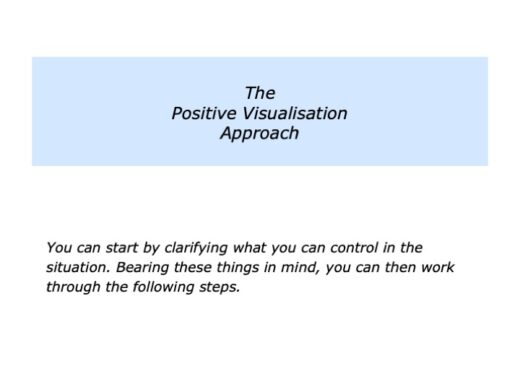
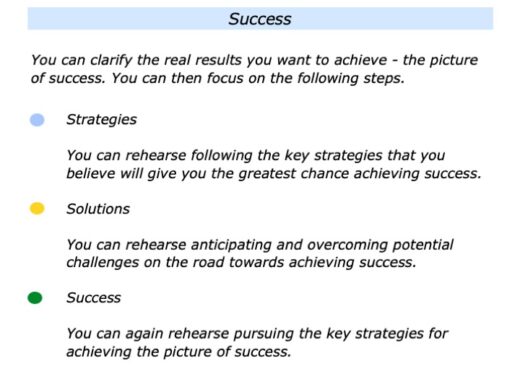
Imagine that you have prepared properly and want to translate your strategies into action. One approach is to focus on the next step.
Relaxed Relentlessness
Great workers often take this approach. Bearing in mind their strengths, they clarify the strategies they want to follow to achieve success.
They then aim to follow a certain rhythm by creating a structure that enables them to follow their chosen strategies. Moving into action, they demonstrate relaxed relentlessness on the way towards achieving success.
Let’s return to the scenario we explored earlier. Imagine that one of your former managers has hired you to do a project in their organisation. You have clarified the key strategies you can follow to do your best to deliver success. Bearing these in mind, you may aim:
To keep following your chosen strategies by doing the right things in the right way every day;
To keep managing your energy properly and following your chosen rhythm;
To keep being relaxed but relentless in the way you pursue your chosen strategies.
Different people develop different rhythms for doing fine work. One person said:
“Preparation is crucial. I then have a ritual for clicking into action and hitting the ground running. My best performances come from being able to get into my rhythm and deliver the required results.
“Sometimes I get distracted. But I have now developed a ritual for regaining my rhythm and doing good work.”
If you are a creative artist, for example, you may have a certain ritual for clicking into action. You may work for a set time and then take break. You may go for a walk or do something else before returning to the work.
Several leaders I worked with before Covid established a different kind of rhythm. One leader for the European arm of a global business explained this in the following way.
“I prefer my lifestyle now, compared with when I headed the UK business. My working work has the following pattern.
“On Monday I take the children to school and then take a lunchtime flight to one of the major capitals. Monday night is spent having dinner with colleagues or clients. Tuesday, Wednesday and Thursday are devoted to clients visits.
“Sometimes this involves another flight on, for example, Wednesday night. The work is intensive, but it is also rewarding. I am able to play to my strengths, which is working directly with clients.
“Normally I fly back on Thursday evening and take the children to school on Friday. The rest of the day is spent working from home and finalising plans for the next week.
“This sounds tough, but it was harder when I ran the UK business, which meant travelling into London every day. My diary was full from the moment I entered the building.
“There were always crises to solve and meetings to attend. Sometimes I was lucky to get home before 8.00 pm at night.
“The lifestyle I have now is excellent. Sometimes I need to spend a week in the USA, but that is fine.
“I have also built a good leadership team who run the daily business. They release me to do what I do best, which is to work with customers and shape tomorrow’s business.”
Let’s assume that you are following your own approach to being relaxed but relentless. It will then be time to focus on the final stage.
Results
Imagine that you are doing the freelance work in the organisation. Like many people in today’s world, it will be vital:
To keep producing short and medium-term successes on the road towards the longer-term picture of success;
To keep connecting with your key stakeholders to keep up-to-date with their challenges and any changes in the results they want delivered;
To keep improving your work and delivering the desired results to the stakeholders.
Sometimes this calls for doing something special to perform superb work, tackle challenges or achieve your goals. Some people do this by taking the following approach.
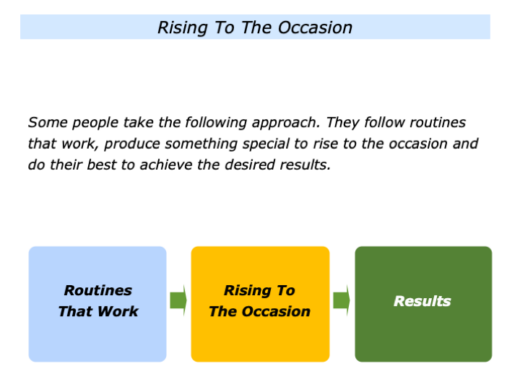
Great workers continue to follow routines that work. They aim to keep doing the right things in the right way. This creates the platform for moving on to the next stage.
Such workers then aim to rise to the occasion. They buy time to think, look ahead to the challenge and clarify the real results they want to achieve.
They relax and explore the potential options for going forwards.. Sometimes this involves reaching into their repertoire to clarify the strategies they want to pursue.
Great workers rehearse how they are going to tackle the challenge. Moving into action, they then become totally engaged. Pursuing their chosen strategy, they do their best to rise to the occasion and produce the desired results.
Let’s return to your own life and work. Looking ahead can you think of a situation where you may want to follow some elements of the relaxed relentlessness approach?
You may want to do this when doing a creative project, contributing to an organisation or leading a team. You may want to do it when aiming to achieve a good blend between your personal and professional life.
How can you clarify the results to achieve? How can you rehearse what you are going to do? How can you follow some elements of the relaxed relentlessness approach? What may happen as a result of taking these steps?
If you wish, try tackling the exercise on this theme. This invites you to complete the following sentences.
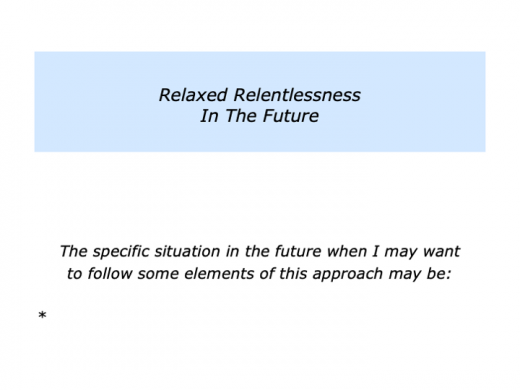
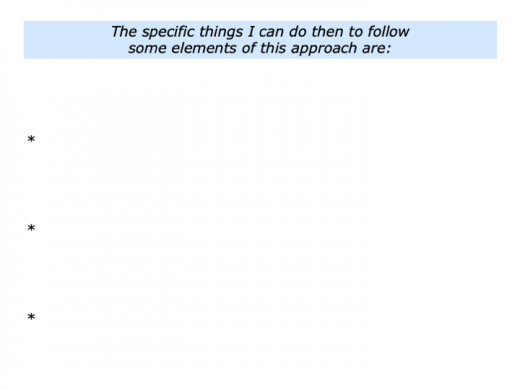
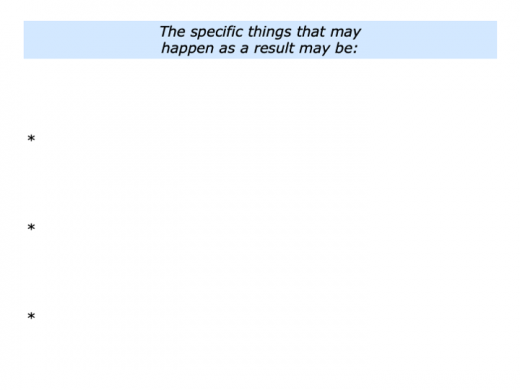






Leave a Reply